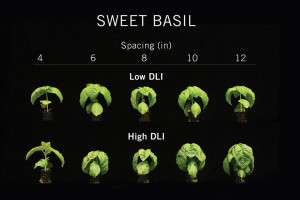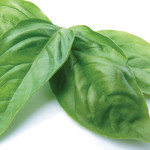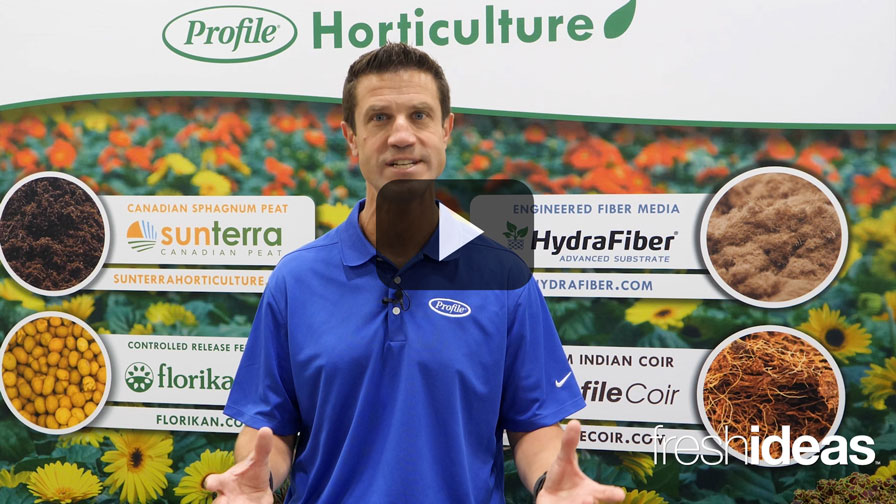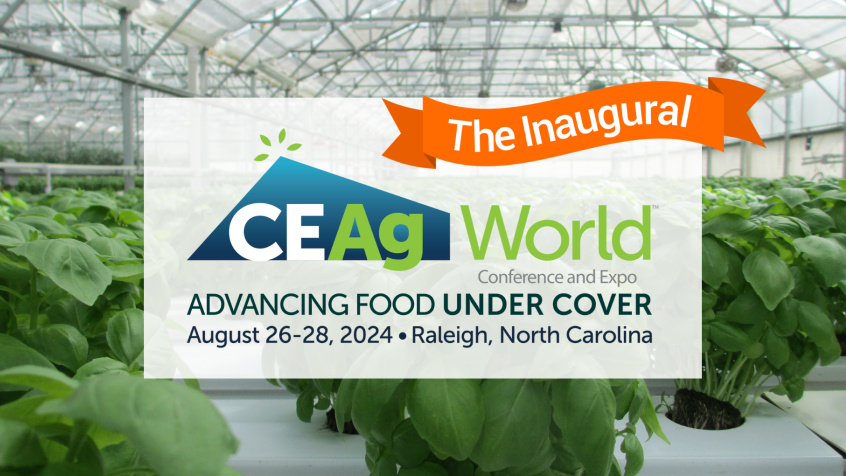Increase Planting Densities To Increase Hydroponic Basil Yields
Basil is a popular culinary herb, and producers are always looking to increase yields to boost their bottom line. We discussed in the November issue of Greenhouse Grower how cultivar selection and hydroponic systems affect the growth and yield of basil, and how proper cultivar selection is an easy way to increase yield without having to drastically change your production practices or increase input costs. In a later article, we will discuss how to manage nutrient solution and temperature during production. However, in this second article of a four-part series highlighting hydroponic basil production, we focus on how increasing planting density under different daily light integrals (DLIs) affects yield of hydroponically grown basil.

Sweet basil grown on 4- to 12-inch-centers spacing under low (~6 mol∙m−2∙d−1) or high (~15 mol∙m−2∙d−1) daily light integrals (DLIs). The photo was taken three weeks after transplanting seedlings into hydroponic systems and treatments.
Planting Densities And DLIs
First, we transplanted ‘Nufar’ sweet basil seedlings into deep-flow technique (DFT) hydroponic systems with plants spaced 4, 6, 8, 10 or 12 inches apart, resulting in plant densities of 9.3, 4.1, 2.3, 1.4 or 1.0 plants per square foot, respectively. The nutrient solution consisted of deionized water and 16N−1.8P−14.3K fertilizer (Jack’s Hydro FeEd; JR Peters). The nutrient solution EC and pH were adjusted to 1.6 mS∙cm−1 and 6 daily, aerated and circulated through a heater/chiller unit to maintain a water temperature of 72°F.
Supplemental lighting was provided by HPS (high-pressure sodium) lamps to increase the light intensity during the day for the plants grown under a high DLI, and provide a 16-hour day length for plants grown under both low and high DLIs. Aluminized shade cloth was also utilized to decrease daytime light intensity for plants grown under a low DLI. The low DLI greenhouse was maintained at a DLI of ~6 mol∙m−2∙d−1, while the high DLI greenhouse was maintained at ~15 mol∙m−2∙d−1. Three weeks after transplanting, we measured height, node and branch number and the fresh and dry mass of shoots.
In the November article, we mentioned that purple basil tends to be the lowest yielding basil type. Therefore, we decided to conduct a second experiment where we increased the planting density of purple basil ‘Red Rubin.’ However, after seeing the results of our first experiment, we only planted purple basil 4 or 6 inches apart. Plants were grown in low light (~7 mol∙m−2∙d−1) or DLI, and data was collected four weeks after transplanting the seedlings.
Denser Plantings = Greater Yields
Fresh weight of sweet basil was 0.3 to 1.6 ounces per square foot greater for basil grown under the high DLI compared to the low DLI as densities increased from 1 to 9.3 plants per square foot, respectively. While unaffected by planting density, the fresh weight of individual plants was 0.3 to 0.4 ounces greater for plants grown under high DLIs compared to low DLIs. Alternatively, neither planting density nor DLI affected height, node or branch number. A 4-inch spacing resulted in the highest fresh and dry mass per square foot for plants grown under both low and high DLIs.
We saw similar results in purple basil. Both increasing DLI and the density of the growing cubes increased yield. For example, plants grown under a high DLI, increasing plant density from 4.1 to 9.3 plants per square foot, increased yield by 2 ounces per square foot.
What It Means
As expected, increasing the density of sweet and purple basil in hydroponic systems increased the yield per square foot under both low and high light. However, there was no impact on the weight of individual plants. What does this mean? Whether you are producing live and sleeved plants or fresh-cut and packaged basil, growing plants on 4-inch centers can increase the yield — both the number of plants and the weight per square foot.
Additionally, the increased yield with closer spacing and higher densities was even greater under high DLIs. For producers who may be considering using supplemental lighting to increase yields, look at what your current planting density is. If plants are currently spaced 6- or 8-inches apart, reduce the spacing to 4-inches for production under lights. The increased yield from the higher density will increase the return on investment.
One important point is that this research was performed on plants that were harvested once (i.e., no successive harvests). With our experience and observations, we believe that harvesting basil only one time as opposed to several times is one of the best means to diminish pest and disease pressure. If you are harvesting basil plants more than once, we suspect that a 4-inch spacing would be too close, given the fact that between each harvest plants get larger and require more room for adequate air movement and light penetration.
Take-Home Messages For Basil Production
Increasing densities of basil planting clearly increases the yield per square foot with no effect on the weight of individual plants. Furthermore, the magnitude of the effect of increasing planting densities was greater under the higher daily light intervals. These results apply to single harvest basil only. Different planting densities may be optimal for growers using a multiple harvest method. Results may also vary across different locations, greenhouse environments and cultural practices. We encourage producers to conduct on-site trials to determine cultivar performance under their production practices.










